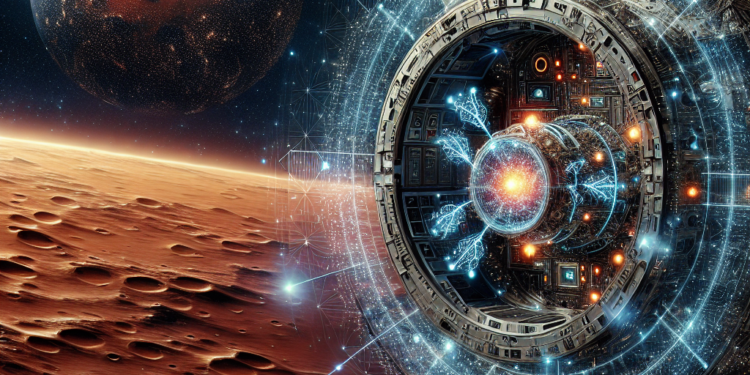Artificial intelligence (AI) has played a significant role in advancing space exploration, particularly in missions to Mars. With its ability to process and analyze vast amounts of data quickly and accurately, AI has helped improve mission planning, navigation, and communication with rovers and other spacecraft on the Red Planet. In this article, we will explore the ways in which AI is enhancing Mars missions and paving the way for future explorations of the Martian surface.
One of the key ways in which AI is revolutionizing Mars missions is through its ability to assist in mission planning and decision-making. AI algorithms can analyze large amounts of data from various sources, such as satellite images, weather reports, and geological surveys, to help scientists and engineers identify potential landing sites for rovers and understand the terrain and potential hazards they may encounter. This information is critical for ensuring the success and safety of Mars missions.
AI can also help optimize the design and operation of spacecraft and rovers. By simulating different scenarios and running virtual tests, AI algorithms can help engineers improve the efficiency and reliability of spacecraft components, as well as predict and address potential issues before they arise. This can lead to cost savings and improved performance during Mars missions.
In addition, AI is playing a crucial role in autonomous navigation and exploration of the Martian surface. Rovers such as NASA’s Curiosity and Perseverance are equipped with AI algorithms that allow them to analyze their surroundings, navigate obstacles, and make decisions about where to go and what to investigate. This level of autonomy is essential for maximizing the scientific output of the missions, as it allows the rovers to operate efficiently and adapt to changing conditions without constant input from mission control.
AI is also being used to improve communication with rovers and other spacecraft on Mars. As the distance between Earth and Mars varies, communication delays can range from a few minutes to over 20 minutes, making real-time control of rovers challenging. AI algorithms can help bridge this gap by predicting and compensating for communication delays, allowing for more seamless communication with rovers and other spacecraft on Mars.
Furthermore, AI is enhancing the capabilities of scientific instruments on Mars rovers, allowing them to analyze samples and make meaningful discoveries more efficiently. For example, AI algorithms can help identify interesting features in images taken by the rovers’ cameras, prioritize which samples to analyze, and even assist in interpreting the results. This can significantly enhance the scientific output of Mars missions and help researchers better understand the geology and potential habitability of the Red Planet.
Looking ahead, AI will continue to play a key role in advancing Mars missions and preparing for future explorations of the Martian surface. With advancements in AI technology, we can expect to see even more sophisticated and autonomous rovers, improved communication systems, and enhanced scientific instruments that will help us unravel the mysteries of Mars and potentially pave the way for human exploration of the Red Planet.
In conclusion, AI is revolutionizing space exploration, particularly in missions to Mars, by enhancing mission planning, navigation, communication, and scientific discovery. With its ability to process and analyze large amounts of data quickly and accurately, AI is helping to make Mars missions more efficient, reliable, and scientifically productive. As we continue to push the boundaries of space exploration, AI will undoubtedly play a critical role in shaping the future of Mars exploration and expanding our understanding of the Red Planet.












